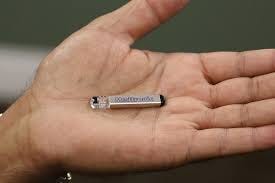A recent report on incidental findings from a cardiac monitoring study bolsters my view that modernity is shredding our health.
The paper is a re-analysis of one of the most important cardiac trials of the decade—the LOOP trial. First LOOP, then the new study.
In LOOP, more than 6000 older patients (age 75) without atrial fibrillation—but with high-stroke-risk features--were randomized to having an implantable loop recorder (ILR) vs standard Danish primary care.
The idea is classic screening: pick up a disease early, treat it and make people better. Here…most AF is unknown to the patient; detecting it would be a good thing because we could start anticoagulant drugs, and this would prevent stroke.
Yet the primary results of LOOP showed that it did not work. Compared with the standard of care, patients in the ILR arm had AF detected three-fold more often. Check. This led to nearly three-fold more anticoagulant drugs in older high-risk patients. Check.
Except that after five years the rate of strokes and major bleeding did not significantly differ in the two groups.
You might wonder how this could be. They detected oodles more AF with the modern device, they got patients who have high risk of AF-related stroke on proven drugs for stroke prevention and yet could not reduce the rate of strokes or bleeding.
(By the way, ILR devices are always on. If they don’t move the needle on AF screening, consumer devices have little chance.)
In the 1960s, two pioneers of screening, Drs. Wilson and Jungner, famously wrote:
“in theory…screening is an admirable method of combating disease,…but in practice, there are snags.”
One of these snags is that there are many reasons older patients have strokes, and AF is only one of them. We call this snag—competing causes.
But it gets even worse than not reducing outcomes. Another snag with AF screening is that it can actually cause harm. That’s where the new study comes in.
When you monitor the heart for AF, you also pick up other things. In older patients, it is common to find slower heart rates. We call this bradyarrhythmia.
The always-on ILR also found 3-fold more bradyarrhythmia than the control arm.
Once again, you might be tempted to think that picking up super slow heart rates would be a good thing. Indeed, patients in the ILR group were 53% more likely to receive a pacemaker.
We place pacemakers to prevent people who have low heart rates from passing out or dying. But having a pacemaker is not free; it comes with the risk of harm, such as infection, broken leads, and sometimes pacing can weaken heart function.
Yet the authors found no differences between the two groups. IOW: the extra pacemakers had no effect. Modernity struck out.
These two studies lead to both specific and general conclusions.
The specific conclusion is that screening for AF is not only ineffective in preventing stroke, it is likely net harmful for patients. Net harmful because having a needless pacemaker is a (probabilistic) harm.
Modernity explains why picking up (and treating) low heart rates in people without symptoms has no benefit. The reason is that the norms of heart rate were determined in a time before modern devices could have ever been thought of.
“Normal” and “abnormal” heart rates were set down when all that doctors had were basic ECGs and 24-hour recording devices. And, crucially, these were only deployed on people who had symptoms.
The key difference now is that modernity allows the constant monitoring of people without symptoms. Our norms have yet to be re-established.
Thinking Beyond Rhythm Screening
The general conclusions regarding the health effects of modernity are more salient.
Modernity has created horrific effects on our diets. High sugar processed food (even in schools) has led to soaring rates of obesity. A safety culture combined with the structure of American cities has made children and adults more sedentary.
You don’t need studies. Walk through any American airport, and the effects of modernity are obvious and stark.
Yet that isn’t all.
Modernity makes all this worse with its devices. Rhythm monitoring devices provide little benefit to people, but the device-makers profit; the companies that make the anticoagulant drugs profit, as do the doctors and hospitals who work up these device-detected arrhythmias.
Another example: instead of preventing heart disease with good food and a culture of exercise, modern medical doctors order coronary calcium scans. There exists not a shred of evidence that the scans lead to lower rates of heart disease in the scanned.
Yet the images are highly lucrative for the healthcare industry—as it leads to anxiety, then stress tests, coronary angiograms, and even stents. And cardiologists aren’t the only beneficiaries; lung doctors also gain because scanning for coronary calcium often picks up nodules in the lung that require lucrative testing.
You might rebut this argument by citing all the new life-saving drugs and devices. This is surely true. My field of electrophysiology has gained from technology.
Yet, on average, I don’t see that human health is better off.
The challenge for the next generations is how to restore better health in this new environment. The forces of modernity are clearly against us. Perhaps not least because it is more profitable for us to be less healthy.
I don’t have the answer. Maybe you do. Let me know.






Read drmirkin.com. He has kept me straight for over 40 yrs. At 72, I have had multiple issues, but it always comes down to exercise and diet. But don’t forget the real KEY to health and that is to have close meaningful relationships.
LOOP was for 75 Year olds. Only applies to those around that age.